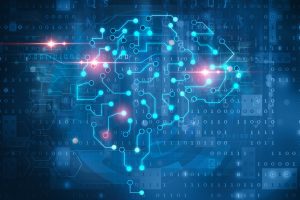A few years back, some developments were made that promised to usher in a new era of manufacturing. First is the Industry 4.0 that revolves around the next generation smart connected factory. The second is the Internet Of Things (IoT), which is a considerable shift towards a better, smarter, and connected ‘things.’ With technology booming, every object is now connected to it and has access to information.
Manufacturing is a growing industry with machines and assembly lines, which is fueled with a high degree of automation. Supervisory Control & Data Acquisition Systems (SCADA) and Distributed Control Systems (DCS) are universal industry standards. So, the question that arises here is how exactly the IoT is relevant to manufacturing, and how does it play a role in your Industry 4.0 initiative?
IoT goes well with SCADA and DCS. The information you generate with the help of SCADA acts as one of the data sources for IoT. Their primary focus is on monitoring, controlling, and analysing machine data to improve productivity and top line.
SCADA SYSTEM AND WHAT IT CONSISTS OF
- Programmable Logic Controllers (PLCs) and Remote Terminal Units (RTUs): They are basically hardware components that interface with machines and control them. Their job is to interact with sensors that are present in the machine. All the parameters that require monitoring come with it. PLCs and RTUs are your interfaces to the world of machines.
- Data Acquisition Systems: This is what you call a centralised system that gathers all the data from PLCs and RTUs. The connectivity can either be wired or wireless. And, OPC (OLE for Process Control) is a recommended way to get connected to your hardware.
- Supervisory Systems: It is a system that allows you to monitor the machines. They also perform real-time condition monitoring, raise alarms when thresholds are breached, ensuring that your machine is working properly.
Internet of Things (IoT)
The Internet of Things is an amalgamation of advances in connectivity hardware, cloud computing, data networks, and big data processing. IoT starts where SCADA, DCS, HMI, and Historians end.
When talking about a typical factory, it is an extremely heterogeneous environment which has grown organically over a period and, in some cases, even decades. Some of the challenges they have seen are:
- Machines that are equipped with different kinds of PLCs and RTUs, they support different protocols.
- All the multiple SCADA systems that come from different vendors, each of them have a specific line or a set of lines. Machine data is put there, but so are data islands. Moreover, SCADA systems are only capable of saving a limited amount of data, so it is safe to say that historical data is not preserved for more in-depth analytics.
- Moreover, the legacy machines that are not connected, they end up lacking in providing the right kind of instrumentation.
- Assets such as energy meters that are left behind and have never been connected due to cost overheads. Yet the information that they provide is vital.
- In the end, existing data Historians can be a data source.
The article gives a perspective on how IoT is relevant to your business and is your ladder to Industry 4.0. You can get started by connecting a couple of your assembly lines to a modern IoT platform and then see what impact machine data analytics has on your business.




